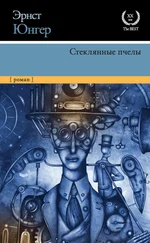All day long, fierce artillery shelling could be heard here and there across our wide moor and marshland. You get the feeling that the Americans have seeped into this landscape as if it were a piece of blotting paper.
By the afternoon, rumors circulate that we are surrounded. In the evening, not far away, we hear pistol and rifle shots.
KIRCHHORST, 10 APRIL 1945
Restless night. After dawn, the artillery battery near Stelle opens fire in the thick fog in rapid, crackling salvos right past our house. Its inhabitants, more or less dressed, rush out into the garden and seek the shelter. I am writing this in my study amid new salvos that make the house reverberate like an anvil under the blacksmith’s hammer blows.
Later the sun breaks through. In the afternoon, two American armored cars from Neuwarmbüchen drive into the village, take four anti-aircraft gunners prisoner, and turn around again. We also hear that other tanks have shown up in Schillerslage, in Oldhorst, and in other towns. The gun emplacement at Stelle continues to pepper the outskirts of town with anti-tank shells as it keeps up the shelling. We can still hear them hammering away in the first half of the night and watch their tracer rounds fly over the house toward Grossburgwedel. Later, intense exchanges of fire in the woods around Colshorn.
KIRCHHORST, 11 APRIL 1945
We are awakened at dawn by the rumbling of tanks. The Stelle artillery emplacement does not open fire. We hear that its crew has scattered during the night after using their last shells to blow up their own guns; their Feldmeister , who wanted to escape in civilian clothes, has committed suicide. That was the man who had plans to level the prison camps. Now his body is lying in the firehouse.
At nine o’clock, a powerful, ever-increasing grinding sound announces the approach of the American tanks. The road is deserted. In the morning light, through bleary eyes, it looks even bleaker and more airless. As so often in life, I am the last man in the district who has the authority to give orders. Yesterday, I issued the only order in this connection: to guard the tank barrier, then open it as soon as the point unit comes into view.
As always in such situations, unforeseen things happen, as I learn from observers. The barrier is located at a piece of land, the “Lannewehrbusch,” of the old Landwehr [56] “‘Lannewehrbusch’ of the old Landwehr ”: this patch of forest takes its local name from the Landwehr , the old territorial militia before World War I.
—a patch of forest that my father once purchased. Two strangers show up there armed with grenade launchers and take up positions at the edge of the forest. They are spotted and cause the forward unit to halt during the considerable time it takes to send riflemen forward, who disarm and capture them.
Then a solitary hiker appears and remains standing on a forest path not far from the barrier. At the moment when the first gray tank with its five-pointed star appears, he releases the safety catch on his pistol and shoots himself in the head.
I stand at the window and look out over the bare garden and across the high road. The grinding rumble is getting nearer. Then, like a mirage, a gray tank with its gleaming white star glides slowly past. Following it in close formation come armored vehicles—myriads of them pass by for hours and hours. Small aircraft hover overhead. The pageant makes an impression of highly coordinated effort in its military and mechanical uniformity—as if a procession of dolls were rolling past, a parade of dangerous toys. At times, the order to halt spreads through the column. Then we can see the marionettes bend forward and then again backward when they start up again—as if jerked on their strings. As often happens when the eye becomes fixed on particular details, I notice especially the radio antennae that sway above the tanks and their escort vehicles: they give me the impression of an enchanted fishing expedition, perhaps out to catch the Leviathan.
Seamlessly, slowly, yet irresistibly, the flood of men and steel surges past. The quantities of explosives transported by such an army column endow it with a terrifying mystique. And, as in 1940 on the roads approaching Soissons, I sense the incursion of a mighty superpower into a completely crushed region. And the feeling of sadness that gripped me then returns as well. A good thing that Ernstel cannot see this; it would have hurt him too much. Recovery from such a defeat will not be the same as after Jena or Sedan. [57] Jena (1806) was a major victory of Napoleon over the Prussian armies; at Sedan (1870), the decisive victory in the Franco-Prussian War, the Germans defeated the French and were thus able to march on to Paris.
This portends a change in the lives of populations; not only must countless human beings die, but much of everything that used to motivate our deepest being perishes in this transition.
We are capable of recognizing necessity, even of understanding and desiring and loving it as well—and yet at the same of being overcome with intense anguish. One must know this in order to comprehend our age and its people. What are birth pangs or the pain of death in light of this drama? Perhaps they are identical, just as sunset is simultaneously sunrise for new worlds.
“Defeated earth grants us the stars.” [58] E. J. cites Boëthius, The Consolation of Philosophy , as he had earlier on 22 November 1944, but now he has just witnessed a procession of white stars on the armored vehicles of the invaders and, refusing to see this as a symbol of defeat, he reads it as one of hope.
This aphorism is coming true in a spatial, spiritual, and otherworldly sense. Supreme effort implies a supreme, though as yet unknown, goal.
I wish to express my deep gratitude to Jennifer Crewe and Marielle Poss of Columbia University Press for their expert guidance and hard work on this book. Roland Knappe of the Klett Verlag was also very helpful. Eliah Bures, Joana von de Loecht, and Heath Pearson all read earlier versions of my introduction and made necessary corrections and expert suggestions for improvement. Finally, my thanks to the talented translators of these journals, who have performed a deep and welcome service to scholarship and world literature by making Jünger’s Second World War journals available to all readers in the wider English-speaking world.
—Eliot Neaman
The entries in this glossary are drawn from the following index to Jünger’s original German journals: Tobias Wimbauer, Personenregister der Tagebücher Ernst Jüngers (Schnellroda: Edition Antaios, 2003), revised and expanded edition. Emendations and corrections have been made where necessary.
A
Abetz, Suzanne (d. 1958), née de Bruycker, married to Otto Abetz, secretary
Abt, captain, World War II
Abt, war comrade of Friedrich Georg Jünger
Adler, Cavalry captain [ Rittmeister ], General Staff, Paris, World War II
Ahasver (c. 486–465 BCE), Xerxes, king, symbolic figure for the Wandering Jew
Ahlmann, Wilhelm (1895–1944), banker, uncle of Klaus Valentiner
Ahrends, see Arendts, Wilhelm
Aksakov, Sergey Timofeyevich (1791–1859), Russian writer
Alain-Fournier, Henri-Albin (1886–1914), French author
Albert I (1875–1934), king of Belgium
Alerme, Marie Marcel Etienne Michel (1878–1949), French colonel, head of Clémenceau’s cabinet during World War I
Alexander, see Jünger, Alexander Carl
Alexander the Great (356–323 B. C. E.), king of Macedonia
Alhoy, Philadelphe Maurice (1802–1856), French author
Читать дальше

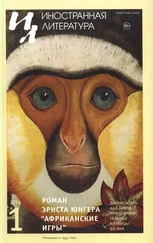

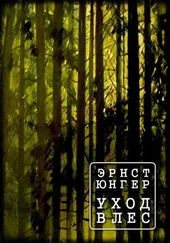

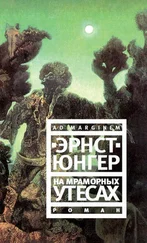

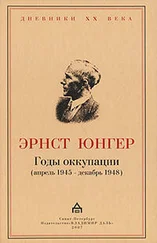
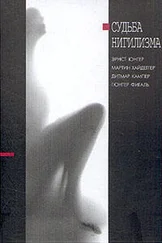
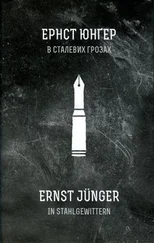
![Эрнст Юнгер - Стеклянные пчелы [litres]](/books/410842/ernst-yunger-steklyannye-pchely-litres-thumb.webp)
